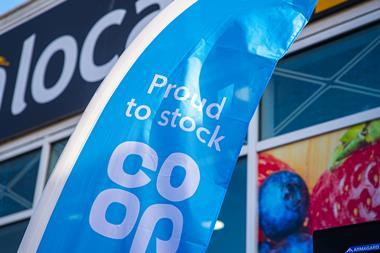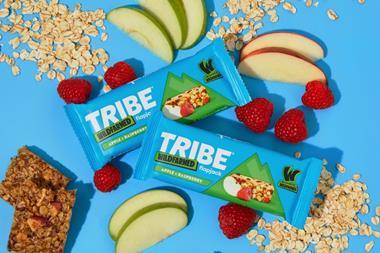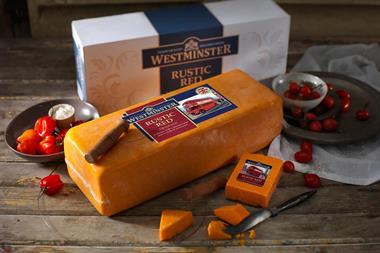Minus the boil, that is - and sometimes the bag. Simon Creasey asks what chance restaurant phenomenon ‘sous vide’ has of becoming a retail phenomenon too
When you think of boil in the bag, what springs to mind? An unappetising chunk of white fish drowning in bland parsley sauce? Thought so.
It's fair to say that boil in the bag has gone off the boil since the advent of the microwave. With convenience the category's only real virtue (even fans of the fish and sauce combos would never argue they were haute cuisine), boil in the bag just couldn't compete.
It didn't help that the very act of boiling ensured the final product was as denuded of flavour as it was of quality. But now the old favourite is back in a new and improved form.
Sous vide a method of slow cooking using vacuum-sealed bags in a water bath has been big news in the restaurant world for years and has recently entered the foodie lexicon here thanks to the likes of Heston Blumenthal (who used it to cook 'perfect' scrambled eggs at Little Chef).
Now, the supermarkets are getting in on the act. In January, Asda proclaimed sous vide would be the big trend of 2010 in the wake of the launch of lines such as its Extra Special Lamb Shanks, one of its top sellers. Waitrose, meanwhile, has launched a range of Forgotten Cuts frozen ready meals. And, according to one source, at least two suppliers are racing to be the first to market with a branded ready meal range.
But can a technique used in Michelin-starred restaurants really revolutionise the humble ready meal market?
On the face of it, it looks like a no-brainer. For one, the method doesn't just improve quality, point out restaurateurs.
"Restaurant kitchens used to be inefficient until sous vide came along and transformed service," says Colin Bussey, MD of Food & Beverage Solutions and former executive chef at Gleneagles Hotel. It's economic too, he adds. "Take a chateaubriand. By searing the meat and firing it into a hot oven you have 30-35% shrinkage, but with sous vide you have 5%."
What really tantalises customers, though, is taste. And that goes not only for hot cooked, but also for raw and cold products. "Take watermelon, for instance," says Halli O'Neil, Asda's food trends manager. "We vac-packed some watermelon the other day and it was a nice pink colour when we cut it up but not bright red or particularly flavoursome. After leaving it in the fridge under vacuum for 24 hours, the flavour was unbelievably intensified."
Waitrose reports a similar flavour enhancement in its sous vide-prepared Forgotten Cuts meat dishes. "Beef cheeks can take anywhere between three and six hours just to get tender and this takes time, care and attention. We've done the hard work for you all you have to do is reheat," says executive chef Neil Nugent.
Unsurprisingly, both Asda and Waitrose plan to expand their ranges. Neither, however, make a song and dance of the food having been prepared sous vide, preferring to stick to a simpler "slow cooked" descriptor on pack and leaving more detailed descriptions to their websites (even then, Waitrose only started explaining "sous vide" online last month).
The reason for the lack of marketing around sous vide is that the average consumer struggles to understand the concept, says O'Neil. "We use the method in the development of some of our meals to intensify the flavours and ensure consistent quality, but we do not sell our products as sous vide. We communicate slow cooking, which consumers understand delivers slow cooked, tender meats."
And, more importantly, conveys the quality message above the premium one. Sous vide meals tend to carry a price tag that reflects the quality of the ingredients and method used (Asda's lamb shanks retail at £5.93). The consensus is that it is not only a harder sell than slow cooked but that its scope could be restricted to premium ready meals not necessarily a category to push in the current economic climate.
Kerry Foods is certainly not convinced. "Meals in a bag in the chilled aisle isn't where consumers are at the moment," says innovation director David Hamilton.
Sainsbury's has "no plans" to introduce sous vide ready meals either and nor does Greencore, one of the biggest ready meal producers. "We see a number of consumer barriers in terms of appearance and merchandising," explains a Greencore spokesman. "Consumer perception needs to be better understood before we would even consider doing anything in this area."
Waitrose's Nugent, however, believes it's only a matter of time before sous vide takes off. "I'd be surprised if there was a ready meal manufacturer in the UK not looking at it," he says. "If not, they are going to be left behind." In short, under vacuum may not be under the radar for much longer.
A history of sous vide
Sous vide ('under vacuum' in French) is a style of cooking developed in the 1970s by French chef Georges Pralus and is most commonly associated with vacuum-packed meat dropped into a water bath.
It started to take off in the restaurant trade here about a decade ago. In the US and Australia sous vide water baths are also widely available for domestic use and many believe they will become a must-have piece of kitchen equipment here too.
When you think of boil in the bag, what springs to mind? An unappetising chunk of white fish drowning in bland parsley sauce? Thought so.
It's fair to say that boil in the bag has gone off the boil since the advent of the microwave. With convenience the category's only real virtue (even fans of the fish and sauce combos would never argue they were haute cuisine), boil in the bag just couldn't compete.
It didn't help that the very act of boiling ensured the final product was as denuded of flavour as it was of quality. But now the old favourite is back in a new and improved form.
Sous vide a method of slow cooking using vacuum-sealed bags in a water bath has been big news in the restaurant world for years and has recently entered the foodie lexicon here thanks to the likes of Heston Blumenthal (who used it to cook 'perfect' scrambled eggs at Little Chef).
Now, the supermarkets are getting in on the act. In January, Asda proclaimed sous vide would be the big trend of 2010 in the wake of the launch of lines such as its Extra Special Lamb Shanks, one of its top sellers. Waitrose, meanwhile, has launched a range of Forgotten Cuts frozen ready meals. And, according to one source, at least two suppliers are racing to be the first to market with a branded ready meal range.
But can a technique used in Michelin-starred restaurants really revolutionise the humble ready meal market?
On the face of it, it looks like a no-brainer. For one, the method doesn't just improve quality, point out restaurateurs.
"Restaurant kitchens used to be inefficient until sous vide came along and transformed service," says Colin Bussey, MD of Food & Beverage Solutions and former executive chef at Gleneagles Hotel. It's economic too, he adds. "Take a chateaubriand. By searing the meat and firing it into a hot oven you have 30-35% shrinkage, but with sous vide you have 5%."
What really tantalises customers, though, is taste. And that goes not only for hot cooked, but also for raw and cold products. "Take watermelon, for instance," says Halli O'Neil, Asda's food trends manager. "We vac-packed some watermelon the other day and it was a nice pink colour when we cut it up but not bright red or particularly flavoursome. After leaving it in the fridge under vacuum for 24 hours, the flavour was unbelievably intensified."
Waitrose reports a similar flavour enhancement in its sous vide-prepared Forgotten Cuts meat dishes. "Beef cheeks can take anywhere between three and six hours just to get tender and this takes time, care and attention. We've done the hard work for you all you have to do is reheat," says executive chef Neil Nugent.
Unsurprisingly, both Asda and Waitrose plan to expand their ranges. Neither, however, make a song and dance of the food having been prepared sous vide, preferring to stick to a simpler "slow cooked" descriptor on pack and leaving more detailed descriptions to their websites (even then, Waitrose only started explaining "sous vide" online last month).
The reason for the lack of marketing around sous vide is that the average consumer struggles to understand the concept, says O'Neil. "We use the method in the development of some of our meals to intensify the flavours and ensure consistent quality, but we do not sell our products as sous vide. We communicate slow cooking, which consumers understand delivers slow cooked, tender meats."
And, more importantly, conveys the quality message above the premium one. Sous vide meals tend to carry a price tag that reflects the quality of the ingredients and method used (Asda's lamb shanks retail at £5.93). The consensus is that it is not only a harder sell than slow cooked but that its scope could be restricted to premium ready meals not necessarily a category to push in the current economic climate.
Kerry Foods is certainly not convinced. "Meals in a bag in the chilled aisle isn't where consumers are at the moment," says innovation director David Hamilton.
Sainsbury's has "no plans" to introduce sous vide ready meals either and nor does Greencore, one of the biggest ready meal producers. "We see a number of consumer barriers in terms of appearance and merchandising," explains a Greencore spokesman. "Consumer perception needs to be better understood before we would even consider doing anything in this area."
Waitrose's Nugent, however, believes it's only a matter of time before sous vide takes off. "I'd be surprised if there was a ready meal manufacturer in the UK not looking at it," he says. "If not, they are going to be left behind." In short, under vacuum may not be under the radar for much longer.
A history of sous vide
Sous vide ('under vacuum' in French) is a style of cooking developed in the 1970s by French chef Georges Pralus and is most commonly associated with vacuum-packed meat dropped into a water bath.
It started to take off in the restaurant trade here about a decade ago. In the US and Australia sous vide water baths are also widely available for domestic use and many believe they will become a must-have piece of kitchen equipment here too.



![XOXO-Product-Shot[ALL FLAVOUR]-Sky-1920x1080](https://dmrqkbkq8el9i.cloudfront.net/Pictures/274x183/4/9/2/355492_xoxoproductshotallflavoursky1920x1080_806584_crop.jpg)






![XOXO-Product-Shot[ALL FLAVOUR]-Sky-1920x1080](https://dmrqkbkq8el9i.cloudfront.net/Pictures/380x253/4/9/2/355492_xoxoproductshotallflavoursky1920x1080_806584_crop.jpg)




No comments yet